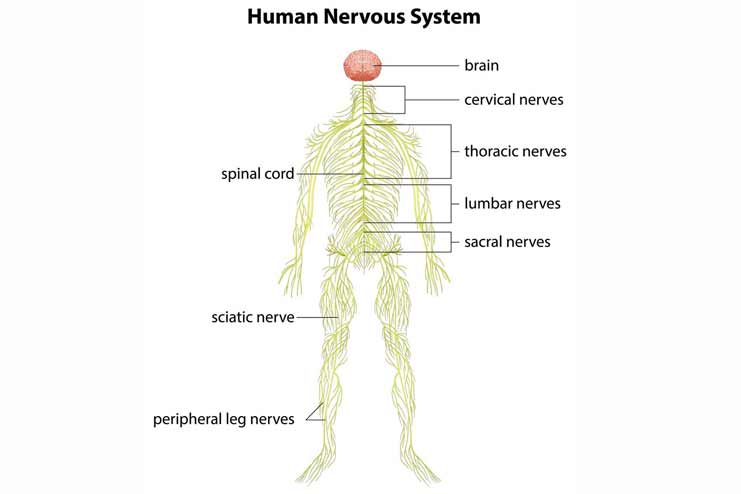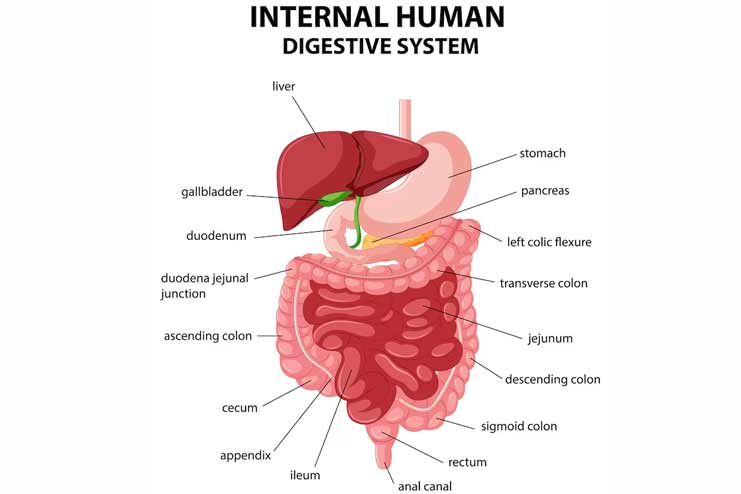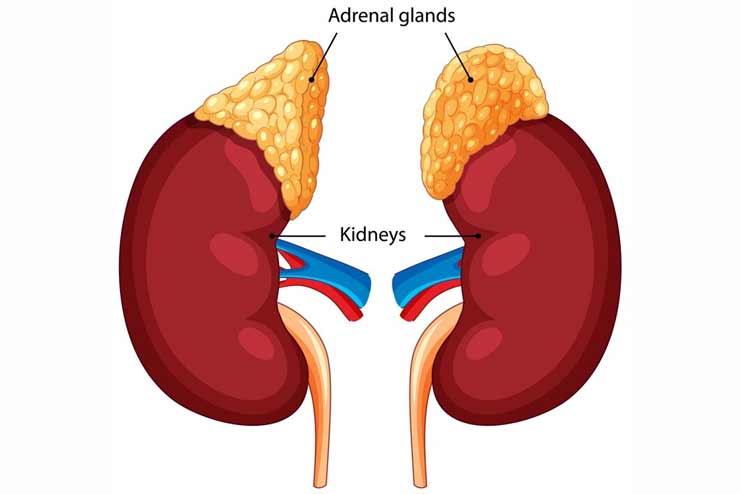Affiliate Disclaimer
Some links in this article are affiliate links. We may earn a small commission if you make a purchase through these links, at no extra cost to you. We only recommend products we find useful to our readersMore than being a hereditary disease, diabetes has become a lifestyle-borne disease.
In 2021, an estimated 537 million adults aged 20-79 years had diabetes, which is 10.5% of all adults in that age group. The number may increase to 643 million by 2030 and 783 million by 2045 (R).
Managing the signs and symptoms of this condition is possible, but it is better to treat diabetes in the early stages. By the end of this article, you will know the best ways to prevent diabetes by making a few changes to your lifestyle and diet.
How Does Diabetes Hamper Health?
The long-term effects of diabetes on the body and organs are numerous.
- Cardiovascular Health

Diabetes and coronary artery disease are interrelated. Diabetes increases the risk associated with cardiovascular health because it is linked with high levels of cholesterol in the blood, which has been found to increase the risk of heart attacks and strokes.
2. Nervous System

Long-term diabetic complications can negatively influence the nervous system, especially the nerves are associated with movement and motility.
3. Digestive Health

The impact of diabetes on digestion is not very prominent. However, it is known to have a negative influence if there has been some kind of nerve damage involved. Nausea, constipation, and diarrhea are very common side effects.
4. Renal Health

The correlation between diabetes and kidney disease is quite prevalent. Diabetic nephropathy is quite common, and many people tend to suffer from it. Prolonged high blood sugar levels damage the filtering units of the kidneys, compromising their functioning. Poor diabetes management, high cholesterol levels, and elevated blood pressure further increase the risk of kidney damage.
How to Prevent Diabetes?
We have categorized the preventive measures into three categories: lifestyle changes, dietary changes, and exercises.
Lifestyle Tips To Prevent Diabetes
As stated at the very beginning, our lifestyle choices are becoming one of the leading factors in the development of diabetes. Some effective lifestyle changes that you can focus on are:
1. Manage Your Weight

Obesity or being overweight is one of the most common diabetes risk factors. The majority of the people at risk or who are in the pre-diabetic stage tend to predominantly suffer from fat deposition around their midsection and abdominal region, which is referred to as visceral fat. These stubborn fats are hard to lose, thus enhancing the associated risk.
Studies (R) (R) (R) have found that the persistent presence of visceral fats is associated with increased inflammation in the body as well as a heightened risk of developing insulin resistance.
In a study (R) conducted with 1,000 pre-diabetic patients, researchers concluded that for every kilogram of weight they lost, they reduced the risks of diabetes by 16%.
How you lose weight depends on personal preference. While some diet to shed those extra pounds, some work it out. Ensure that you opt for natural weight loss ways that have an effective impact.
2. Get Regular Check-Ups

According to CDC data from 2017–2020 (R), the prevalence was higher in males than females; 41.0% of males had prediabetes compared to 32.0% of females.
Regular checkups have been found to have amazing results in avoiding diabetes in the early stages. This helps provide you with a better idea about the state of health and thus actively lets you prepare for the best management and regulation of the condition.
Schedule a regular doctor’s check-up every 4-6 months and get the tests done to ensure that your blood glucose and insulin levels are in check.
3. Watch Portion Sizes

Watching your portion size is an effective way to prevent diabetes. Often, the majority of us end up eating more than we should.
Eating a large portion of food (R), especially high-carb food, has been found to cause higher spikes in blood glucose and insulin levels.
In a study (R) conducted with Asian Indian men for a period of 2 years in a randomized controlled primary prevention trial, it was found that those who cut down their portion sizes and practiced other nutritive methods were found to reduce the risks of diabetes by 46%. The same was the result because of heightened insulin sensitivity and beta-cell prevention.
4. Practice Mindful Eating

Mindful eating is one of the best ways to prevent diabetes. Keep the distractions away to ensure that your sole focus is on eating and chewing food properly for better nutrition.
Studies (R) have found that we tend to consume optimal amounts of food when we practice mindful eating. This helps avoid overeating and the problems with high cholesterol levels.
5. Keep Yourself Well-Hydrated

Maintaining proper hydration levels in the body is beneficial for overall health. Not only does it help prevent labored metabolism because of heightened toxicity, but it is also quite helpful in preventing diabetes.
Picking water as the primary beverage helps you avoid the temptation of carbonated and sweetened beverages, which is not advised for diabetic and prediabetic patients. Studies (R) found that people who consume two servings of these beverages daily had an increased risk of developing Type-2 diabetes by 20%.
Drink an optimal amount of water throughout the day – 8 glasses a day is believed to be ideal for most people.
6. Quit Smoking

Multiple studies (R) (R) have found heightened risks of diabetes with active and passive smoking. In an observational study (R) conducted with over a million participants, it was found that the average smokers experienced a heightened risk of diabetes by 44%. In contrast, regular and vigilant smokers experienced an increased risk of diabetes by 60%.
Quitting smoking is effective in preventing diabetes and in the prevention of several health risks ranging from heart disease to cancer.
7. Avoid a Sedentary Lifestyle

Sedentary and inactive lifestyle (R) (R) contributes to obesity and can hamper the metabolism, which enhances the deposition of visceral fats in the body. Remember, visceral fats are associated with the development of insulin resistance. It is thus essential to get active and reduce sedentary time.
Dietary Changes To Prevent Diabetes
Let’s take a look at some of the dietary changes to prevent diabetes.
1. Say Goodbye to Sugar and Refined Carbs

Sugar and refined carbs are a complete no for someone who is at risk of diabetes. The consumption of these has been associated with a faster breakdown of food, which causes spikes in blood glucose levels in the body.
Persistent spikes in blood glucose levels have been found to enhance the risks associated with insulin resistance, which is one of the most common contributing factors when it comes to the induction of diabetes.
Several studies (R) (R) have found a correlation between the consumption of sugar and the risks of diabetes. In a collaborative analysis (R) including 37 separate studies, the researchers found that individuals who consumed fast-metabolizing carbohydrates were at a 40% heightened risk of developing diabetes.
2. Adhere to a Low-Carb Diet

Carbohydrates, especially simple carbs, are the worst micronutrients for someone at risk of diabetes. Adhere to a low-carb diet or stick to eating complex carbs that break down gradually to keep you energized throughout the day.
Consuming a low-carb diet has been scientifically proven (R) (R) to be very effective in preventing diabetes. The main reason is that it helps lower blood glucose levels and enhances insulin sensitivity.
In a study (R) conducted with prediabetic participants for 12 weeks, the individuals were either given a low-fat or a low-carb diet. The researchers found that those who consumed a low-carb diet had reduced blood glucose levels by 12% and insulin levels by 50%.
If possible, try the Ketogenic diet for beneficial results.
3. Consume More Fiber

Soluble fiber (R) is beneficial in the prevention of diabetes because of the kind of impact it has on the blood glucose levels in the body. It doesn’t cause spikes in the body.
Insoluble fiber (R), on the other hand, has been found to have beneficial effects in reducing the blood sugar levels in the body.
Try to consume more fiber in the natural form with oatmeal, berries, etc. for best results.
4. Optimize Vitamin D Consumption

The lack of Vitamin D in the body can have varying impacts on one’s health. If you have been trying to prevent diabetes, optimizing Vitamin D consumption is one of the most effective ways.
Studies (R) (R) have found that people who have a lower level of Vitamin D in their bodies have a heightened risk of developing diabetes at a later date.
In a study (R), researchers found that participants with optimal levels of Vitamin D were at a reduced risk of developing diabetes in comparison to the ones who had lower levels of vitamin D.
If you wish to enhance the levels of Vitamin D consumption in your body in a natural way, it is suggested to add fatty fish in your diet. Cod liver oil supplements have beneficial impacts in this regard. Enhance your sun exposure for maximum impact.
5. Eat More Fruits and Vegetables

Another way to prevent diabetes is by consuming more fruits and vegetables. These are rich in nutrients, essential vitamins, and minerals and are high in beneficial fibers.
Fruits and vegetables also help manage your weight, which is one of the primary factors associated with the development of diabetes in individuals.
Bulk up on vegetables that are low on carbs because this will keep you full throughout the day and ensure you keep diabetes-associated issues at bay.
6. Spice It Up

Herbs and spices can help manage one’s risks of diabetes. Turmeric and berberine have been found to have beneficial impacts in the effective prevention of diabetes.
The anti-inflammatory properties (R) of curcumin in turmeric are beneficial in preventing the inflammatory markers associated with the risks of prediabetes.
A study conducted with 240 prediabetic patients found that the group supplemented with 750 mg of curcumin daily for nine months showed no signs of diabetes, while the control group did showcase 16.4% in them.
Much like curcumin, berberine helps prevent the risks associated with diabetes.
These spices have been associated with better insulin sensitivity and reduced risks for other diseases.
7. Start Drinking Coffee or Tea

While we did mention sticking to just water as the primary beverage, including coffee or tea, further helps regulate the risks associated with diabetes.
Several studies (R) (R) have found that drinking coffee in moderation reduces the risks associated with type-2 diabetes. These have predominantly been found effective in people who are obese or overweight.
The presence of polyphenols (R) in coffee and tea has been found to have beneficial impacts in protecting the body against the risks of diabetes.
Be careful adding milk and sugar to your beverage. Unsweetened and black coffee and tea are recommended.
Exercises To Prevent Diabetes
Exercise and having an active lifestyle is one of the best ways to prevent diabetes. If you are unsure which exercises to try, we have some suggestions for you.
1. Aerobic Exercises

30 minutes of aerobic exercises multiple days a week is beneficial in keeping the risks of diabetes to a bare minimum.
Some of the best forms of aerobic exercise include walking, jogging, tennis, swimming, and biking. If you are finding it hard to do 30 minutes of exercising, start with 10 minutes and then work your way up to 30.
Don’t put excess strain on your body. Rather, be creative about the process and indulge in exercises you enjoy.
2. Strength Training

Once you have mastered aerobic exercises, you can move on to the next level: strength training.
Strength training has beneficial impacts in not just inducing better weight loss but also building muscles and toning the body. It has also been found to help maintain healthy and strong bones.
Weight training allows diabetics to utilize the glucose present in the bloodstream.
3. Flexibility Training

Flexibility training improves muscle elasticity and how well your muscles and joints work. It has also been found to reduce soreness and strain.
When exercising, it is important to be regular and consistent.
Conclusion
To prevent diabetes, you must make small changes to your lifestyle, diet, and exercise routines. Start with small changes and slowly start incorporating these into your everyday life.
-
Mar 2019Written by Somapika D
-
Oct 2024Edited by Lakshmi Gayatri
In this Article




















